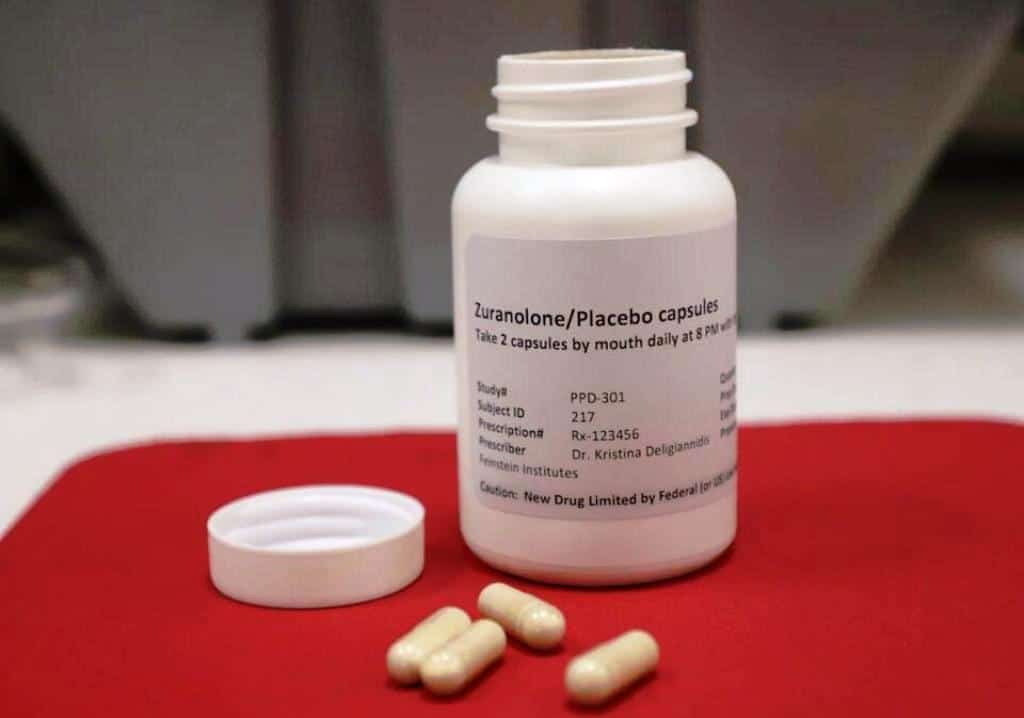
For Sahar McMahon, welcoming her second baby into the world was a journey marked by unexpected challenges.
This time was different, unlike her first experience as a new mom, where excitement and joy were at the forefront. After giving birth to her second daughter, Lenora, McMahon struggled with overwhelming sadness, low energy, and difficulty focusing.
With her first daughter, Ophelia, McMahon enthusiastically used a baby development tracking app and enjoyed frequent playdates with friends. However, with Lenora, she felt a lack of motivation to leave the comfort of their home, and even simple tasks like taking a shower seemed like daunting endeavours. Fatigue weighed her down, yet sleep eluded her. She brushed it off as typical new mom exhaustion, never suspecting it could be something more.
After reflecting on those difficult times, McMahon said, “I never wanted to hurt myself. I just existed.”
Occasionally, my kids would scream in the living room. I would leave them to their own devices during such instances.
As soon as I got into my room, I closed the door, screamed into my pillow, and then asked myself, ‘What are we doing? ‘” “I had a very pessimistic thought process, which is not who I am as a person.”
In 2021, during one restless night, McMahon turned to the internet for answers. She searched for her symptoms: lack of energy, crying spells, and sleep troubles. That’s when she stumbled upon a glimmer of hope – a phase three trial for zuranolone, a medication designed to treat postpartum depression.
Desperate for relief, McMahon immediately signed up for the trial, which she entered four months after giving birth. A double-blind trial was conducted, meaning she wasn’t aware whether she received the actual medication or a placebo. However, McMahon noticed a remarkable change in herself the day after she started the drug.
“When I started the drug, the next day, I woke up and was like, ‘OK.’ I immediately just started feeling more like me,”
McMahon says. “It saved my life. It saved my marriage. It saved my kids.”

In the weeks that followed, McMahon’s life took a positive turn. The medication helped her regain her sense of self, lifting her mood and energy levels and sparking her motivation to fully engage with her children. A glimmer of light emerged amidst the darkness she had been facing.
The journey through postpartum depression was not easy for Sahar McMahon, but the trial for zuranolone offered a much-needed lifeline.
Her experience reflects the importance of awareness and research in developing treatments for postpartum depression – a condition that affects countless mothers worldwide.
Zuranolone: A Potential Treatment for Depression
Zuranolone, a potential breakthrough in depression treatment, has recently completed its phase three clinical trial with encouraging results. The drug, administered as a daily pill over two weeks, is being developed jointly by Sage Therapeutics and Biogen. A US Food and Drug Administration approval has been granted to this drug’s”priority review” status, signifying its potential significance in treating serious conditions compared to standard medications. The FDA is expected to approve the drug by August 5.
Positive Findings in Phase Three Trial
The phase three trial results, published in the American Journal of Psychiatry, offer hope for those suffering from severe postpartum depression. The study involved 196 women, and those who received a 50-milligram dose of zuranolone over 14 days experienced ” The placebo group showed no improvement in depressive symptoms.
Even more promising is that these improvements were still evident 28 and 45 days after the treatment. The findings are part of a comprehensive data set that the FDA will likely review. The study’s lead author, Dr Kristina Deligiannidis, stated that this was a crucial second trial to support the drug’s potential approval, with the first clinical study published in 2021.
Consistent Efficacy and Safety
In previous studies, lower doses of zuranolone had already shown good safety, tolerability, and efficacy. The recent phase three trial reaffirmed these positive results with the higher 50-milligram dose. DrDeligiannidis and her team observed a rapid response to the treatment, with some participants experiencing improvements in their depressive symptoms as early as day three.
Zuranolone improved depressive symptoms by 50% or more compared to placebo at the end of the 14-day treatment period, according to 57% of those who got it. The efficacy of zuranolone was maintained throughout the follow-up period of 45 days, with 61.9% of the participants who received the drug still reporting significant improvements in their depressive symptoms.
While the results are promising, there were some reported side effects. Some participants who received zuranolone experienced drowsiness, dizziness, or sedation. However, it’s important to note that since the treatment course is acute and lasts only 14 days, any side effects should be limited to this short period. Of the 98 women who received zuranolone, 16 reduced their dosage from 50 to 40 milligrams due to these side effects.
Zuranolone’s performance in the phase three trial significantly advances depression treatment. There’s hope for people with severe postpartum depression thanks to the drug’s rapid response and sustained efficacy.As the FDA reviews the data and considers the drug for approval, mental health professionals and patients alike await with anticipation, recognizing the potential impact this treatment could have on improving the lives of those with depression.
There are reports from the CDC (CDC) indicate that approximately one in five Americans suffer from depression. The prevalence of this condition varies significantly by state, highlighting the pressing need for effective and accessible treatments. The zuranolone phase three trial results offer hope in addressing this mental health challenge as researchers continue to seek better ways to support those grappling with depression.
During the trial, an encouraging 26.5% of the women who took zuranolone reported experiencing drowsiness, while 13.3% experienced dizziness and 11.2% reported sedation. The occurrence of headache, diarrhoea, and nausea was less frequent among the participants. Importantly, the researchers observed that no individuals taking zuranolone suffered side effects severe enough to cause loss of consciousness, withdrawal symptoms, or increased suicidal ideation or behaviour. It is worth noting that there were no reported patient deaths.
DrDeligiannidis, one of the researchers involved in the study, highlighted the remarkable benefits of zuranolone. It demonstrated rapid antidepressant effects, a short at-home treatment course, and a generally well-tolerated side effect profile. This suggests that a brief, acute treatment may be sufficient for many patients, followed by close monitoring.
McMahon shared her positive experience with the drug, expressing how it transformed her life, marriage, and relationship with her children. She described how her depression had affected her daily life, leading to a lack of interaction with her kids and a sense of helplessness.
Current postpartum depression treatments include standard-of-care antidepressants, which can take 12 weeks to work.Zulresso, the first FDA-approved drug specifically for postpartum depression, is administered intravenously in healthcare. However, some physicians and expectant mothers remain cautious about using antidepressants during pregnancy due to concerns about potential neurodevelopmental harm.
Zuranolone and Zulresso both work by restoring allopregnanolone, a naturally occurring substance in the body that protects brain networks from the effects of stress. Allopregnanolone levels rise during pregnancy and then drop abruptly after childbirth, which may contribute to postpartum depression. By providing medications that are structurally similar to allopregnanolone, such as zuranolone and brexanolone, it is possible to alleviate some of the symptoms associated with postpartum depression.
The key difference between Zulresso and zuranolone lies in their administration methods. While Zulresso is given as a 60-hour intravenous infusion in a hospital setting, zuranolone is taken orally at home for 14 days.
The phase three trial on zuranolone involved a diverse group of women, including Black and brown participants, which suggests that the findings could be more widely applicable. Low-income women or those without access to healthcare, in general, may benefit from this, particularly those who face barriers to long-term treatment.However, experts caution that medication should not be the sole or primary treatment for mental health conditions, especially among vulnerable populations. Comprehensive care, including non-pharmaceutical approaches, should be considered.
While the results of the trial show promise, there is still a need for further studies to assess the long-term impact of zuranolone, including among breastfeeding mothers, and to understand its effects on mother-child interaction.
In conclusion, zuranolone offers hope as a potential faster-acting and effective oral treatment for postpartum depression. The program may not be a panacea, but it could add a valuable treatment option to the list of options available for women suffering from postpartum depression.

